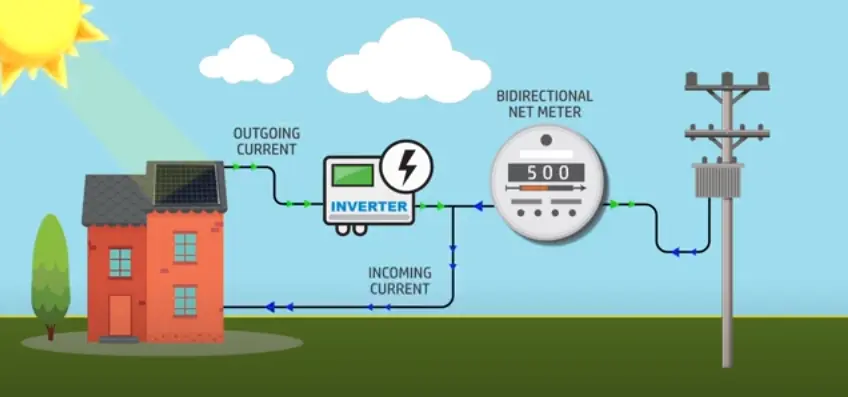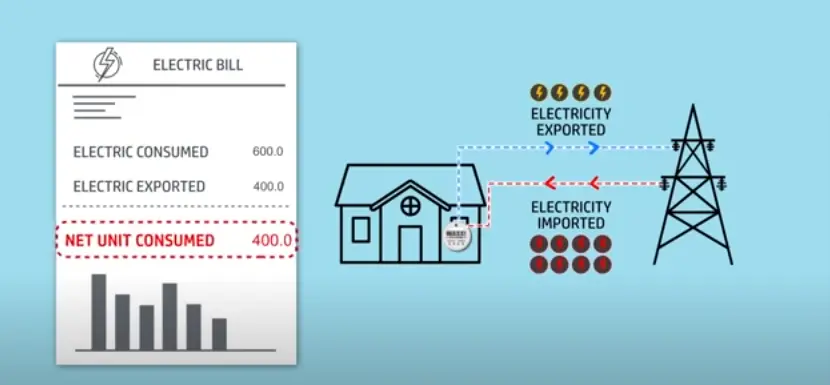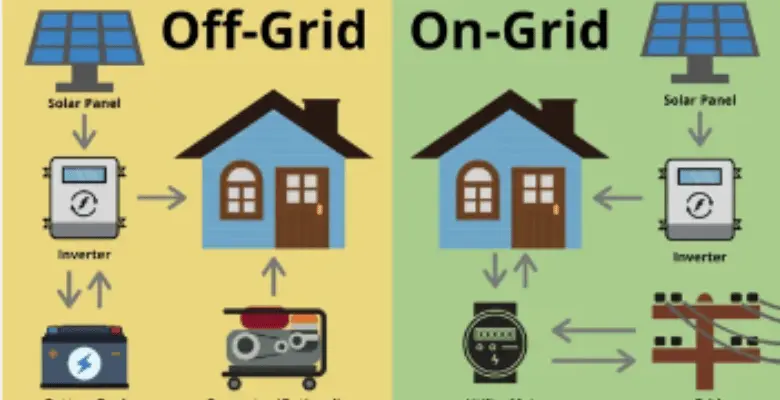Net Metering
Many people have questions about net metering: What is it? How does it work? What’s the installation process, required documents, and cost? How will electricity billing be handled? Is there an agreement involved? This blog will answer all these questions. After extensive research, I’m confident this information will be helpful.
What is Net Metering?
A net meter is a device that records the units of electricity produced and consumed with the utility grid. It is similar to the electric switches installed in our houses, which record the units of electricity used in our homes. You’ve likely heard of net metering if you’re considering a grid-connected solar system. Net metering is a system that allows your solar panels to be connected to the public grid. It measures the electricity you generate and consume, helping balance your energy usage and production after solar grid synchronization.

Net metering is a clever way for solar energy enthusiasts to get credit for the power they contribute to the grid. Let’s say you have solar panels installed on your roof. During sunny days, those panels might churn out more electricity than you can use. With a bi-directional meter, excess electricity goes back into the grid, and your electricity meter runs backward, giving you credit. So, when the sun goes down and you need electricity from the grid, you’re only billed for what you use beyond what your panels provide. It means you only pay for the “net” energy you consume.

How Does Net Metering Work?
In homes, traditional meters record the electricity consumed, generating a bill based on your consumption. With a grid-connected solar system, your generated solar energy synchronizes with the grid without needing a battery backup. The energy you generate first meets your home’s needs, and any excess is sent to the grid. The net meter records the electricity you take from the grid and the electricity you send back, making the grid act like an extensive storage system.

Types of Solar Systems
Before installing a solar system, it’s essential to understand the different types available:
On-Grid Systems:
These are connected to the grid and rely on it for power storage.
Off-Grid Systems:
These systems are not connected to the grid and require battery storage.

Installing a Net Metering System
Step-by-Step Process
Application and Approval
You must apply for net metering approval from your local DISCOM (electricity distribution company). Your electricity bill contains all the necessary DISCOM information, including their website and office address.
Submitting Documents
When applying, you’ll need to provide:
- A recent electricity bill
- Photo ID
- Address proof
- Application form and charges
Vendor Selection
If you opt for a subsidized system, you may need to select a vendor through DISCOM’s online portal.
Meter Installation:
Depending on your state’s policies, DISCOM might provide the net meter, or you may need to purchase and calibrate it yourself.
Approval Process
Once you apply, the DISCOM will review your application. If approved, the existing meter will be replaced with a bi-directional net meter that tracks consumption and production.
Costs Involved
Application Fee:
A nominal charge was paid to DISCOM.
Meter Purchase and Calibration:
If not provided by DISCOM, you may need to buy and calibrate the net meter.
Installation Costs:
Charges for setting up and commissioning the system must be completed within 160 to 180 days.
Post-Installation Billing
After installing the net meter, your billing will involve:
Export and Import:
The net meter records how much electricity you send to the grid and how much you consume from it.
Net Billing:
At the end of each billing cycle, the difference (net) between what you used and what you produced is calculated. You might receive a credit or payment based on the DISCOM’s rates if you generate more than you use.
Agreement (PPA)
When you install a grid-connected solar system, you become a generator of electricity. It requires a Power Purchase Agreement (PPA) with the DISCOM, outlining the following:
- The terms for using and supplying electricity to the grid
- Solar Tariff Rates for excess electricity provided to the grid
- Settlement of accounts at the end of the financial year (April to March)

Additional Insights
Net metering is a significant step towards sustainable energy use. By generating electricity and sending excess to the grid, you can reduce electricity bills and contribute to a greener environment. Understanding the process and requirements helps in making an informed decision.
This comprehensive guide clarifies net metering and provides practical steps for those interested in adopting solar energy. With the correct information, you can seamlessly integrate a solar system into your home and enjoy the benefits of clean, renewable energy.
